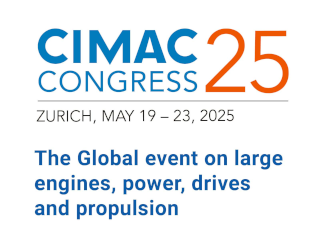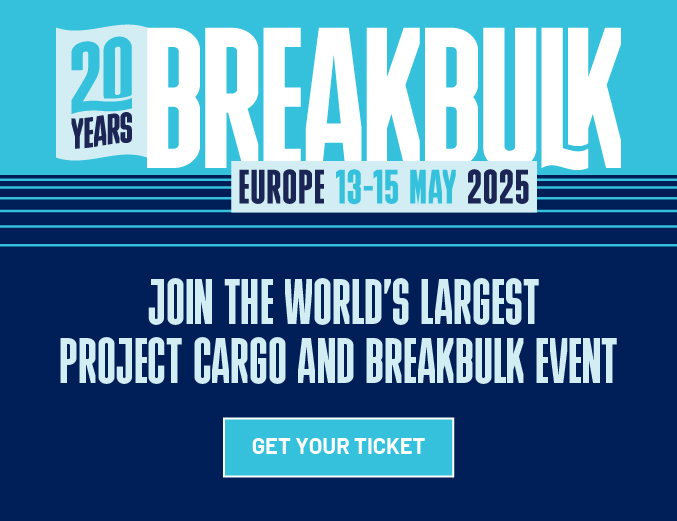The uplift in container ship charter rates gathers further pace despite poor cargo volume growth early this year, writes Michael Hollmann
Container shipping continues to work its way towards a market balance despite the slowdown in global economic growth and trade[ds_preview] this year, as highlighted by a series of downward revisions to official forecasts by the IMF, WTO and others. Average freight rates for liner operators are up year-on-year while hire rates for charter vessels kept recovering over the past month; they are still lagging levels reported twelve months ago, though.
Spot freight rates assessed by Drewry’s World Container Index (WCI) are up 12% year-on-year, with double-digit improvements on main routes ex China to Europe and North America and single-digit price increases in the transatlantic trade. HANSA also gained further insight into the upward trend in contract freight rates for major shippers in trade and industry.
Contract freights up by 4.0 %
According to Mannheim-based Tim Consult, contract freights have gone up by 4.0% in a nine-month perspective since last summer. The highest increases were recorded on routes to North America – more than 10.0% year-on-year for shipments ex Asia and close to 10.0% for transatlantic shipments ex Europe.
»The expectations of members of our benchmarking community are that the trend will be stable to slightly firmer for the rest of the year,« explained Tim’s managing director Bjoern Klippel. The company advises clients with a combined annual shipping volume close to 5.0% of all global box trades.
The upward trend can hardly be explained by any surge in shipping volumes. Forecasts for container trade growth this year remain at a moderate 4.0%, although the year was off to a very poor start with global liftings across all trades declining by 2.1% year-on-year during January/February, as latest CTS (Container Trades Statistics) data show.
Analysts agree that the driving force behind it is a slowdown in fleet growth due to reduced newbuilding deliveries and a rise in demolition activity. According to London broker Howe Robinson, growth of the global container ship fleet was limited to around 125,000TEU in the first quarter – less than one third of the additions recorded in Q1 2018 (435,000TEU).
Meanwhile fleet utilisation has substantially improved over the past weeks, with the idle fleet (tramp vessels without charter and liner-controlled vessels in lay-up) contracting to 2.1%. This is basically the same level as last year.
Charter rates, by contrast, still have some way to catch up as the recent increases are still quite fragmented. Larger post-panamaxes enjoyed healthy increases but panamaxes and smaller ships are still facing rates that are lower or just the same level as six months back.
Index rates rising faster
The pace of improvement picked up over the past four weeks, though. The New ConTex gained 2.3% month-on-month versus just 1.0% in the preceding four-week-period and the Howe Robinson Containership Index even rose by 4.6%. The latter also covers the post-panamax categories which achieved the strongest increases.
Faced with a severe drought in availability of large gearless vessels, liner operators have no other choice than to pay up to seize one of the rare ships coming open. Since our previous issue, the benchmark rate for 8,500–9,000TEU class ships went up from 22,000 to 27,500$/day as per last done by Zim on a 9,200TEU vessel delivering in July.
Finally, traditional panamaxes are beginning to see improvements as well. Tonnage demand continued at strong levels following the surge during March. By 8 April, the spot tonnage list was reportedly down to just six vessels – from around 40 at the start of March.
However, it took some time for hire rates to start firming. Latest fixtures saw hire levels for maxi-panamaxes (5,000TEU) increase to 8,500–8,800$/day as in the case of the 5,015TEU »Pamina« which joins Hyundai Merchant Marine (HMM) for 3–6 months in the Far East. Previous fixtures had still been concluded at levels below 8,000$/day.
Similarly, rates for baby panamaxes of 4,250TEU gained more traction, with one vessel obtained over 9,000$/day – up from mid 8,000’s $/day – for an employment starting in the Persian Gulf.
Below 3,000TEU, the picture remains fragmented. The improvements are largely limited to gearless 2,700TEU, 1,700/1,800TEU and smaller feeder vessels in Europe and the Mediterranean.
2,700 TEU surpassing 9,000 $/day
The 2,700/2,800TEU type enjoyed a rally in demand, resulting in extremely tight availability levels – no more than two or three vessels two weeks forward worldwide. Consequently rates firmed up by a few hundred dollars over the past weeks. The top mark in Asia was set by the Thyssen 2700 type »Munk Strait« (2,702TEU, built in 2004), fixing a 5–7 month employment with Yang Ming in the Far East at 9,000$/day net of address commission. This translates into a gross rate of around 9,300$/day – up from mid/upper 8,000’s $/day one month ago.
The spot supply of 1,700TEU vessels was also decimated significantly due to strong demand in Asia and in the Mediterranean. Hire rates saw further gains although not at the pace owners would have wished. Standard geared Wenchong 1700 types saw a gradual rise from mid 7,000’s to just under 8,000$/day in Asia while some other slightly larger types or gearless vessels already surpassed the 8,000$ barrier.
The Hyundai 1800 type »San Alvaro« achieved 8,100$/day in 2–6 month period with Maersk in the Mediterranean while the sister vessel »San Amerigo« obtained 8,500$/day for twelve months reefer-heavy trading on behalf of Dole in the Caribbean.
Asian market fails expectations
As far as smaller feeders of 1,200TEU and less are concerned, the Asian market continues to fail the expectations with standard CV1100s still rated at around 6,000$/day versus low 6,000’s and low 7,000’s $/day in the Mediterranean and the Caribbean. A number of ships have been positioned from east of Suez to the Mediterranean over the past two to three months due to more attractive employment options there.
Rates for gearless feeder vessels in northern Europe remained stable or even improved by a few hundred dollars for some classes. It comes as a positive surprise for shipowners amid all the uncertainty and concerns over a displacement of smaller vessels by Maersk’s new 3,000+ TEU feeder ships.
The steady-to-firmer trend was borne out by fixtures including the open-top 1,421TEU »Vera Rambow« at 9,500€/day and the 1,926TEU »Delphis Finland« at 14,500$/day both to Unifeeder. The Hanjin 1200 type »Lantau Arrow« switched from COSCO to OOCL for 5–7 month period at 8,500$/day.
Michael Hollmann

















